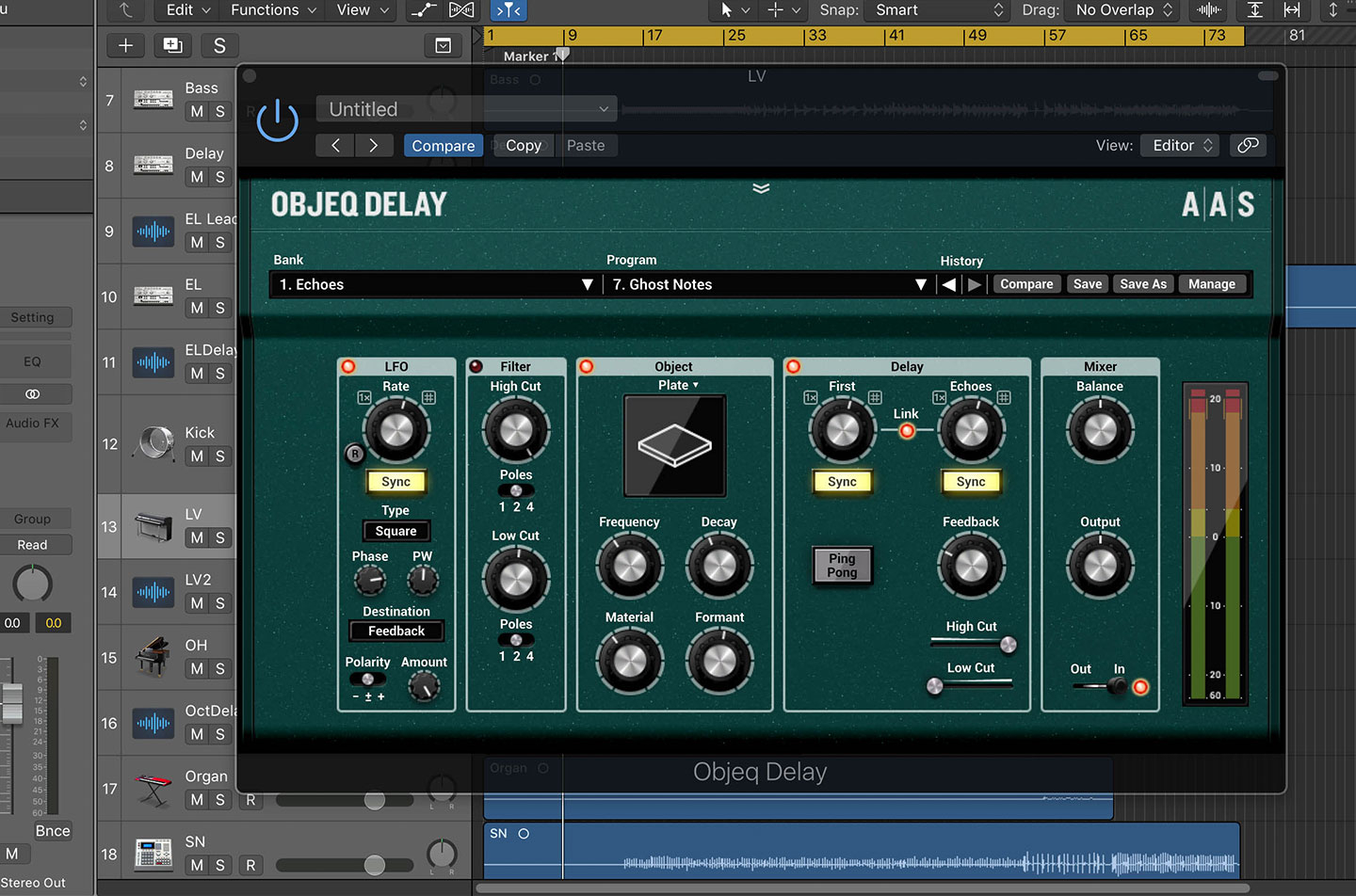- When we last checked in on the physical modelling specialists at Applied Acoustics Systems (AAS), they had just released a plug-in version of Corpus, an instrument they originally built for Ableton. Their latest product is Objeq Delay, a creative audio effect that combines an acoustic resonance engine with a delay unit. Besides the delay part, it shares some obvious similarities with Corpus, so I was curious to see whether it would bring anything truly new to the table.
As with other AAS plug-ins, installation is super easy. The installers are activated with your license information and as long as you're online when you run the installer, you don't even need to enter your serial number. When you open the plug-in for the first time, you'll see the familiar AAS UI theme, with distinct modules directing your focus and processing the signal in a left-to-right direction. Objeq Delay has five modules: four for processing audio and one LFO. (Additional modulation like an envelope follower or another LFO would not have gone astray.) The signal first passes through a multimode filter then into the acoustic object module where four resonance engines color the sound. From there, the signal goes into a delay module with its own feedback circuit and finally into a mixer. With the exception of the mixer, each of these modules can be deactivated by clicking the small LED in the module's title bar.
You'll find controls for selecting and comparing presets above the module panel. Objeq Delay comes with seven different banks of presets, including Echoes, Modulators, Rhythmic Loop Manglers, Kick Track Enhancers, Snare Track Enhancers, Drones and the requisite Richard Devine Signature bank (is there a plug-in that he doesn't do preset design for these days?). Objeq Delay's preset library isn't overwhelming, but it does indicate what the plug-in can do. AAS also has a good selection of demos from each bank on the product page.
The naming of the preset banks hints at what AAS intended for Objeq Delay and shows a point of difference from Corpus that may not be obvious at first. There is an emphasis on rhythmic and percussion duties rather than melodic roles. The primary reason is a lack of support for MIDI note control of the acoustic resonator's pitch. This is a very odd design decision, especially considering the fact that Corpus had this feature when it was released nearly a decade ago. You can see an example of this in a tutorial by Dubspot, which uses Corpus to add sub-bass to a melodic line by routing MIDI notes via the effect's sidechain section. I suppose that, as a delay, AAS wanted to concentrate on the rhythmic side of things. But having MIDI control of the resonators would make Objeq Delay much more useful.
That said, Objeq Delay's compact list of parameters and lack of menu-driven UX makes for a quick and efficient sound design experience. The object module offers four different types of resonators to play with—string, beam, plate and drumhead. And while this is a somewhat reduced selection compared to Corpus (we've lost tube and pipe), I found the acoustic resonators in Objeq Delay to have a wider sweet spot of useful sounds in comparison to its elder brother. The delay module also has the ability to control the first and subsequent echo time amounts separately. Each of these can be synced to the host tempo or left to run free, with the latter option allowing for very short delay times that can be used for comb filtering, chorus and flanging effects. This second delay line (called "echoes" in the UI) has its own feedback loop with high and low cut filters, but I found myself wishing for an option to route the feedback through the object module as well.
I came away from Objeq Delay with mixed thoughts. If you're looking for a creative delay that excels in enhancing rhythmic material, there's no doubt it's a good fit. It's just tough not to think about what could've been possible with more modulation options and, more importantly, support for MIDI note control.
Ratings:
Cost: 4.0
Versatility: 3.0
Ease of use: 4.2
Sound: 4.4
